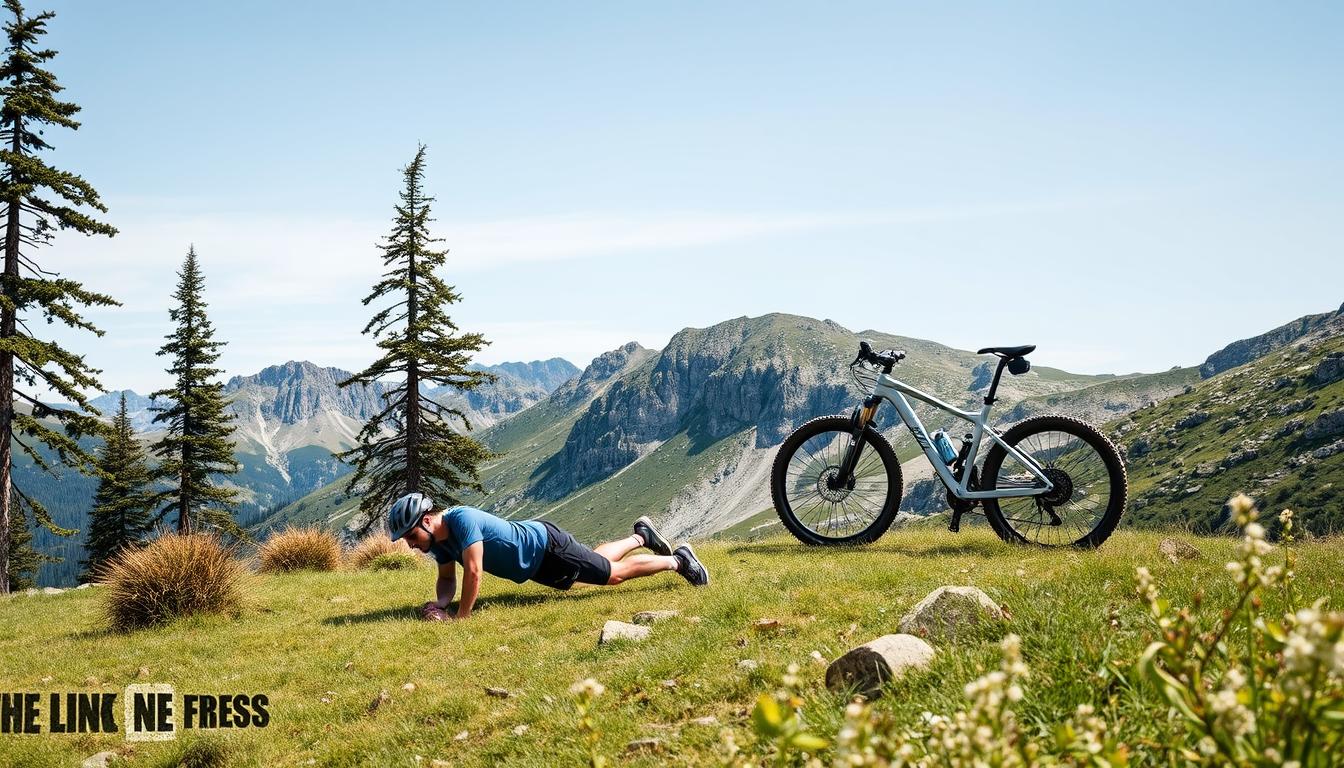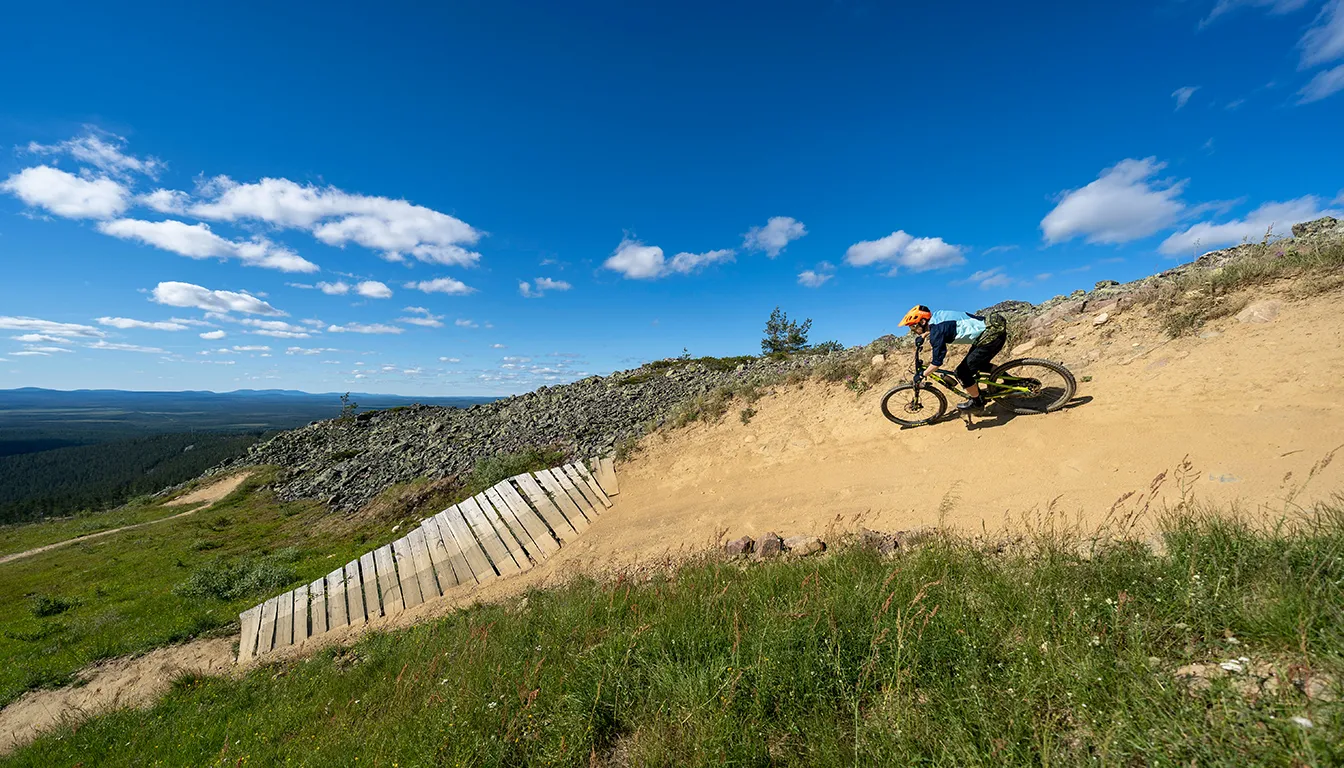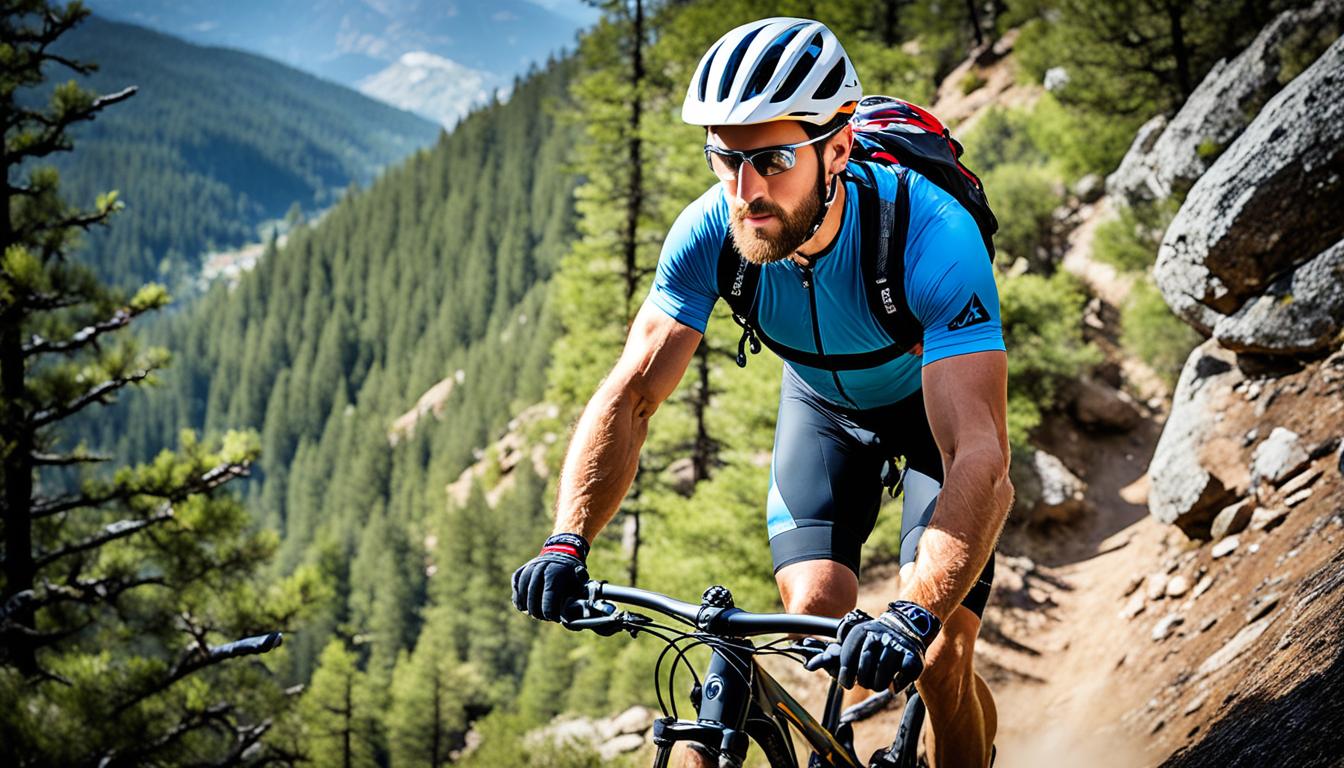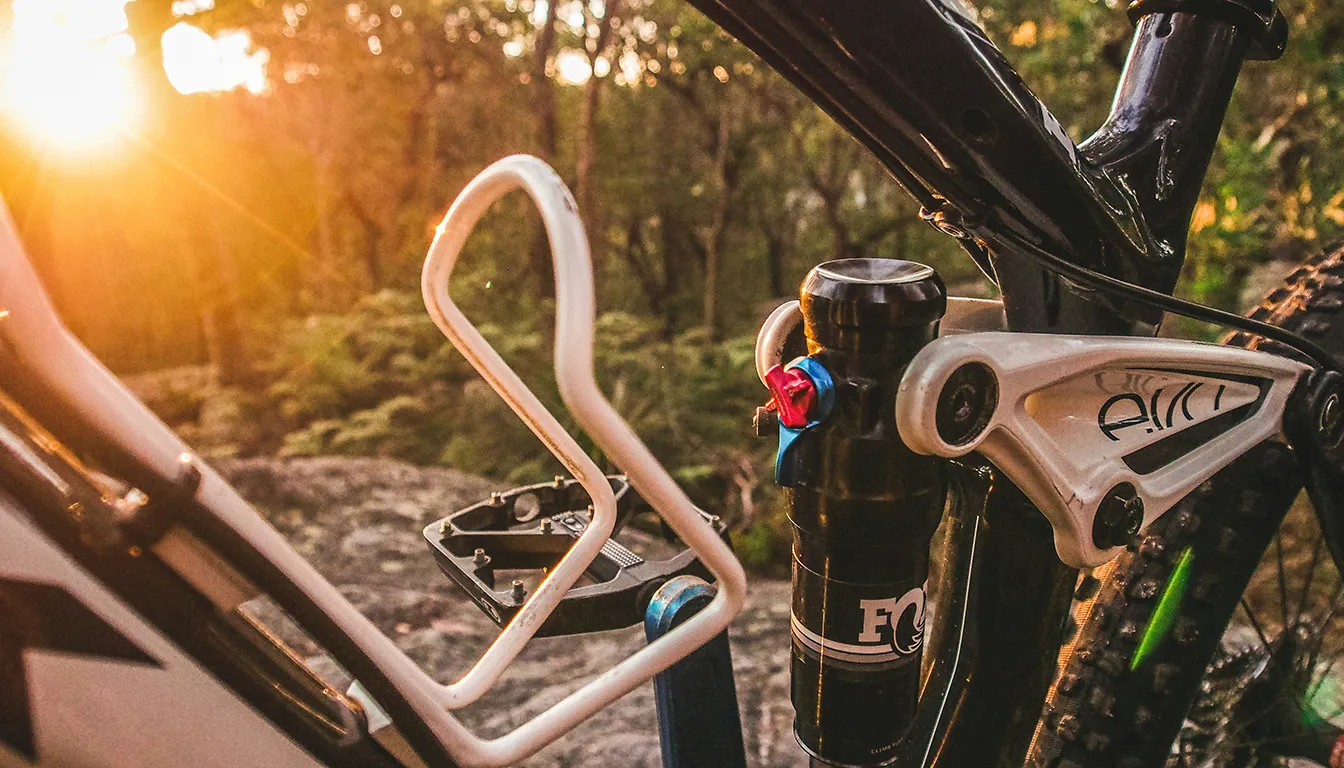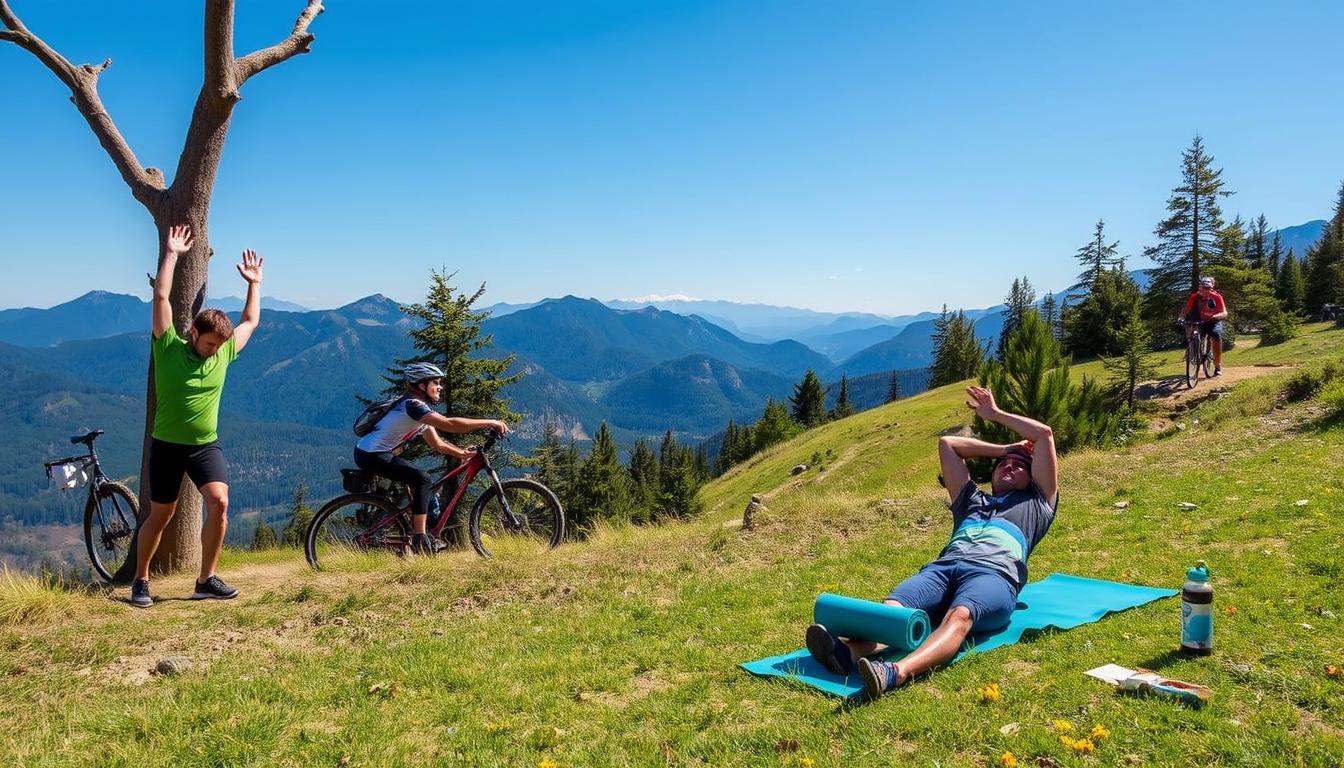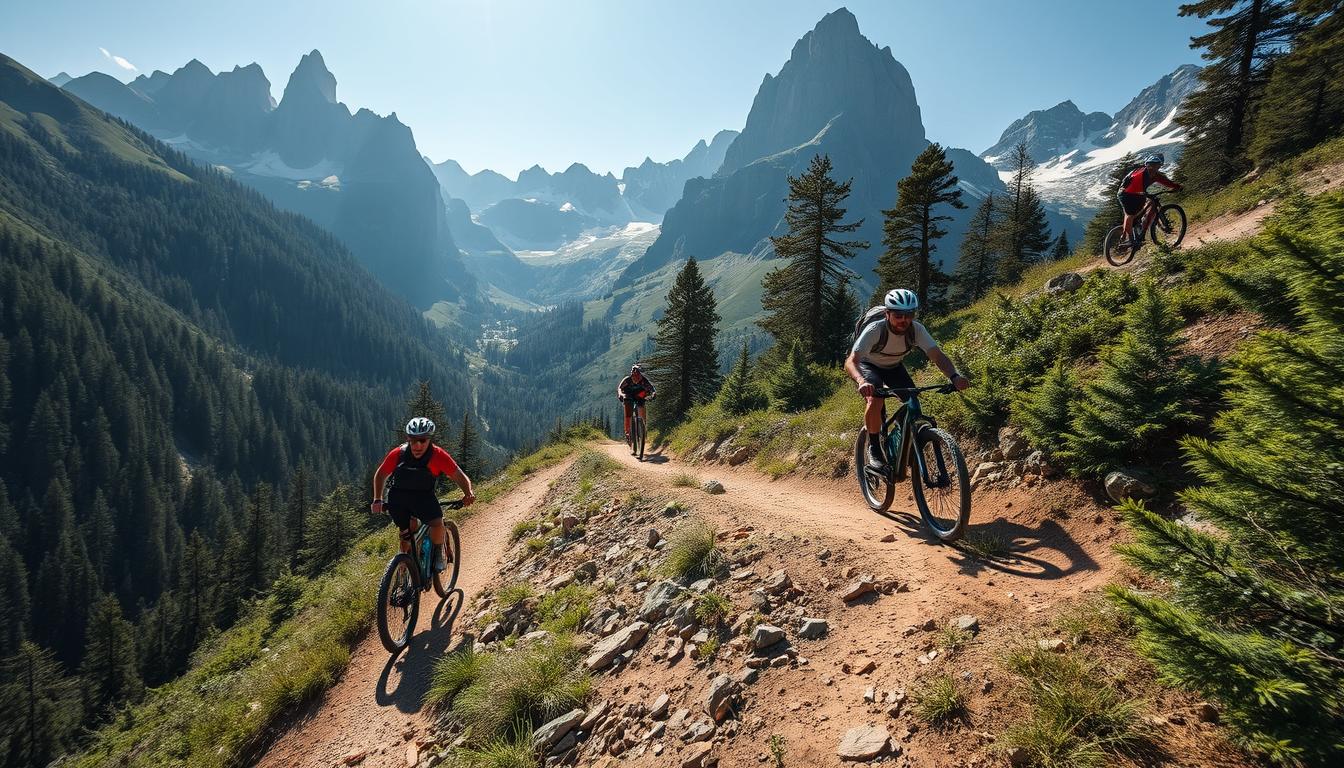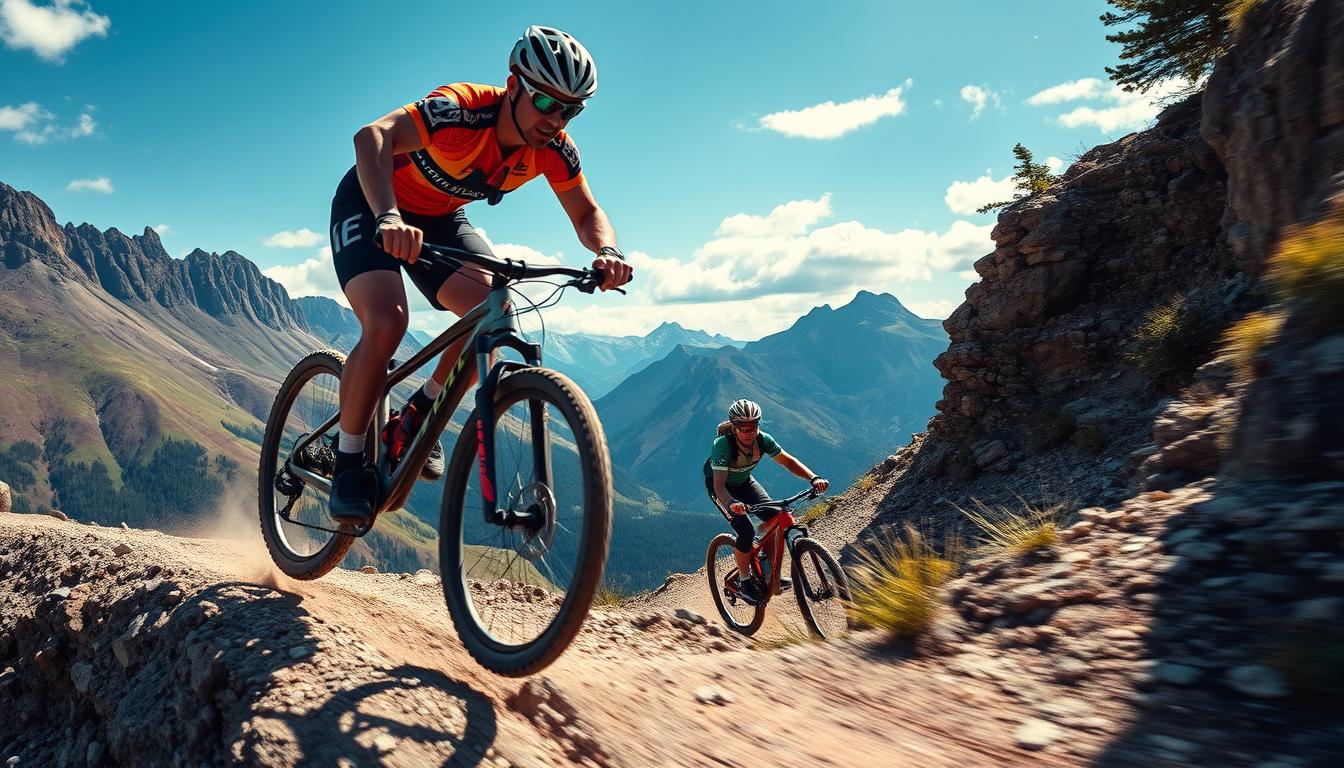Mountain biking is an exciting sport. It demands skill and strong physical strength. Core strength is vital for tackling rough terrains and improving performance.
These workouts include planks, side planks, and the bird dog. They help build a strong base to handle the bends and twists during biking. Regular practice brings great benefits. Jonny, for example, has seen great improvements in his plank times. These exercises are great for all, from beginners to advanced riders. They make your biking experience better by boosting your stability.
Why Core Strength Matters for Mountain Biking
Core strength is very important in mountain biking. It helps to keep the body stable while riding. This stability is crucial for better control and performance. The core includes muscles from the pelvic floor up to the shoulders. They work together as a central support. This support helps with energy transfer from the upper to the lower body.
The Role of Your Core in Stability
A strong core is key for balance on difficult terrains. It leads to better posture and less strain. Your core helps control movement, which is important on technical trails. With a strong core, you can push harder on the pedals. This makes you faster and more efficient.
Common Stability Issues Faced by Mountain Bikers
Many bikers struggle with core stability. This can lead to lower back pain and injuries. Poor alignment and a weak core can cause hip problems. This results in discomfort and instability, especially on hard rides or sharp turns. To prevent injury and improve your biking, it’s important to do core exercises.
Understanding the Core’s Functions
The core does more than just keep you stable. A strong core improves control and connection with the bike. This is crucial for cornering or going downhill fast. Working on your core helps with balance and reduces back pain. It makes riding in a tucked position easier during long rides.
Key Core Exercises for Mountain Biking
For mountain bikers, having a strong core improves stability and performance. Mixing isometric core exercises with dynamic core strength movements builds a powerful base. This reduces injury risk. We’ll highlight exercises that specifically boost your core for better biking.
Essential Isometric Holds
Isometric holds boost endurance and stability. They keep your spine aligned while biking. This is crucial for control during rides.
- Plank: Your body should form a straight line from your head to your heels. Keep your core tight. Aim for a 30-60 second hold.
- Side Plank: Balance on one side. Keep a straight line from your head to your feet. Hold for 30 seconds on each side.
- Bird Dog: Starting on all fours, stretch one arm forward and the opposite leg back. Hold briefly, then switch sides.
Dynamic Movements to Enhance Core Strength
Dynamic core strength movements add useful muscle power. They help you adjust to changing ride conditions. This makes them a key part of training.
- Deadlifts: Keep your core tight with a straight back. Lift carefully. This works your hamstrings and back.
- Kettlebell Swings: Drive the movement from your hips with a strong core. It’s great for explosive power.
- Forward Lunges with a Twist: Lunge forward and twist towards your leading leg. It boosts leg strength and core balance.
For details on doing these exercises correctly, many resources are available like core exercises for cycling improvement. By sticking to these exercises, you’ll see better strength in your riding technique.
Mountain Biking Core Workouts for Every Skill Level
Enhancing your core strength can make a big difference in mountain biking. It doesn’t matter if you are a beginner or a seasoned pro. Tailored core workouts improve your bike control and stability. Here we discuss core exercises for all levels – from beginners to advanced mountain bikers.
Beginner Workouts to Build Foundation
Starting with core basics is key for newcomers. Core exercises for beginners often include:
- Planks to improve holding strength.
- Bird dogs for better balance and coordination.
- Hip bridges to work your glutes and lower back.
These exercises build a strong core and prepare you for more advanced moves.
Intermediate Workouts for Functional Strength
After mastering basic exercises, move on to intermediate workouts. These include dynamic and static exercises like:
- Kettlebell windmills for side muscles.
- Resistance band workouts for more challenge.
- Single-leg deadlifts for core strength and balance.
This level helps your muscles work together. It gets you ready for tough trails. Knowing how to use your strength correctly is crucial for maneuvering your bike.
Advanced Workouts for Competitive Riders
Experienced riders need high-intensity core workouts. These workouts include exercises like:
- Barbell back squats for strong legs.
- Dumbbell clean and press for power.
- Press ups with a pause for upper body stability.
Do three sets of 10 reps for each exercise, taking about 20 minutes. Rest as little as possible between sets. This mirrors mountain biking’s demands and boosts endurance and performance on hard trails.
This structured training improves your biking performance, speed, and confidence. For more tips on better downhill biking, check out essential techniques and routines that boost your core workouts.
Creating a Regular Core Workout Routine
For mountain bikers looking to up their game, a solid core workout routine is key. It’s not just about being fit. Having a strong core is essential for stability when you’re riding.
Frequency and Duration of Workouts
For the best results, aim to include core exercises in your week three to four times. Keep each workout between 30 to 60 minutes. This balance helps you work hard but also recover well. Short, focused sessions prevent burnout and keep you motivated.
Tracking Progress for Core Strength
Keeping an eye on your progress can really motivate you. Write down the exercises you do, including how long you hold them and the number of reps. As you get stronger, make things harder. Try adding new exercises or more difficult versions of the ones you’re already doing.
Recording your progress isn’t just good for maintaining strength; it also shows you how much you’ve improved. Seeing your own progress is a great way to stay motivated.
Conclusion
Spending time on core workouts is key for improving mountain biking. A strong core helps with stability and safety. It makes handling tough moves easier and enhances the ride.
Working on your core is not just about getting physically strong. It also builds mental toughness. With regular core-focused exercise, cyclists see better endurance and agility. This is vital for all types of biking trails.
Moreover, mixing strength training with flexibility exercises prevents injuries and boosts performance. A solid core is the backbone of great mountain biking. So, aiming to strengthen these muscles is crucial for a great adventure outdoors.
Check out this detailed guide for adding core exercises to your biking routine. It will help push your limits. For more info, read about the benefits of mountain biking here.
FAQ
Why is core strength important for mountain biking?
Core strength is key for mountain biking. It helps riders stay stable and in control on tough terrains. This means you can keep your position and move energy well between your top and bottom halves.
What core exercises are recommended for beginners?
Beginners should start with basic core exercises. Planks and bird dogs are good choices. They strengthen the core and help avoid stability issues.
How often should I do core workouts for mountain biking?
You should do core workouts 3 to 4 times a week. Each session should be 30 to 60 minutes. This balance helps with both effort and rest.
What are some advanced core exercises for experienced riders?
Experienced riders can try advanced exercises like kettlebell swings and deadlifts. Also, high-intensity biking drills that mimic tough rides and quick downhills are great.
How can I track my progress in core workouts?
To track progress, record how long you can hold exercises. Gradually up the challenge as you get stronger. This keeps you motivated and building core strength effectively.
What are the benefits of a strong core for mountain bikers?
A strong core means better stability, control, and safety on rides. It boosts your mountain biking skills overall.
